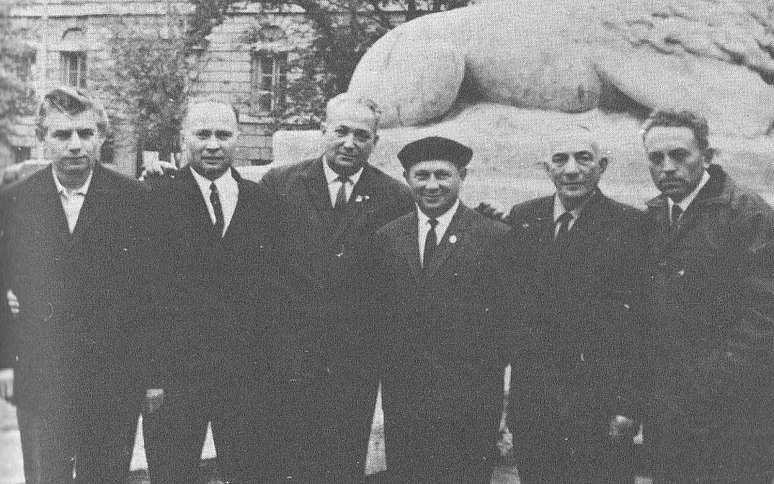Unlike Auschwitz, the place existed only for the mass extermination of minorities
Sobibor was a major Nazi extermination camp established in Poland, that is, unlike Auschwitz or Dachau, the place existed only for the mass extermination of minorities. Their main target was the Jews. At least 167,000 people died in Sobibor, the Holocaust Encyclopedia documents.
After the Wannsee Conference of 1942, the logic of the Final Solution was decreed, the effort aimed at the extermination of the Jews as a war priority. The goal was clear: to free the living space from the Germans.
Given this commitment, Operation Reinhard was launched, which consisted of the construction of several camps dedicated to extermination operations, integrating the transfer of 2 million Jews to Poland. Three camps were born from this project: Bełżec, Sobibor and Treblinka II.
The operation was coordinated by the General Hate Globocnikas documented by the Holocaust Historical Society, and was divided into two departments: one for the logistics of the forced mass emigrations of Jews into the country and the other responsible for the construction of the camps.
Sobibor was under the administration of Franz Stangl and was inaugurated in April 1942. After its foundation, the camp was divided into three operational sectors: administration, reception and assassination. With the gas chamber as the main strategy, most prisoners were sent directly to extermination. A narrow path called the Tube connected the reception area to the extermination areas.
The revolt
Faced with the atrocities, in October 1943 a group of prisoners planned a daring and dangerous escape from the camp. The fear of many was that, in addition to the exterminations themselves, with the resumption of the Soviet defense, the Nazis wanted to destroy everything there, to hide their war crimes. Therefore, escape seemed like a reasonable decision.
Initially led by Ukrainian Leon Feldhendler, the movement gained reinforcements when a group of Soviet Jewish soldiers arrived at the station; Therefore, the leadership passed to Alexander Pechersky. When the revolt broke out, the leaders at least wanted to kill the officers who commanded the place.
In total 11 SS officers were killed, while 600 Jews stormed the fortifications of the death industrial complex, heading towards the forest edges of the region. Many didn’t make it out alive.
“There were dead bodies everywhere”, wrote the Sobibor survivor, Thomas Blattin his memoirs. “The noise of rifles, the explosion of mines, grenades and the noise of machine guns assaulted the ears. The Nazis were shooting from afar while in our hands there were only primitive knives and hatchets.”
About 300 mutineers managed to escape from the camp with their lives. However, the rebels’ fears came true: after the Nazi defeat, the Germans destroyed the place to cover up the crimes and what happened that year.
“Prisoners killed 11 German soldiers and some trained guards in Trawniki. That day about 300 prisoners managed to escape from the killing center. About 100 were caught in the net that followed the uprising. About 50 prisoners escaped from Sobibor and survived the war,” explains the Holocaust Encyclopedia.
The plan was to turn the extermination facilities into a place of detention for women and children deported to occupied western Belarus after the murder of men in their families. However, this never happened and the Nazis only tried to hide the existence of Sobibor, which worked for a while.
The true story was told in the film Sobibor (2018), directed by Konstantin Khabensky. With an emotional narrative, the Russian film presents powerful scenes of what happened to the victims of Nazism.
Source: Terra
Rose James is a Gossipify movie and series reviewer known for her in-depth analysis and unique perspective on the latest releases. With a background in film studies, she provides engaging and informative reviews, and keeps readers up to date with industry trends and emerging talents.


![Here it all begins in advance: Carla discovers her true colors!… What awaits you in the week of October 27 – October 31, 2025 [SPOILERS] Here it all begins in advance: Carla discovers her true colors!… What awaits you in the week of October 27 – October 31, 2025 [SPOILERS]](https://fr.web.img4.acsta.net/img/1a/c9/1ac9c60c3279849c2babe78e208ce4ff.jpg)



-1jefyz8v9bv3l.jpg)
